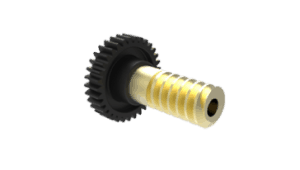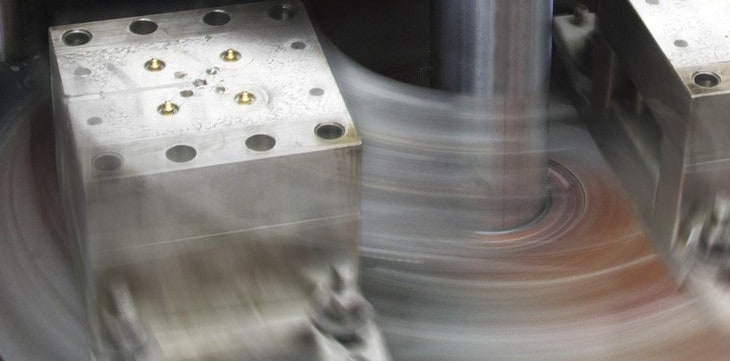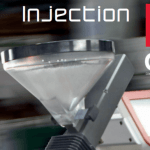Multi-material injection moulding (overinjection) is one of the most widespread technologies for manufacturing plastic components. The process is based on the injection of two or more materials in a single mould and process. In this article we will analyse its various techniques as well as the advantages it can offer for the production of personalised parts.
What methods of multi-material injection moulding exist?
Interval injection moulding
Among the various injection moulding techniques, interval injection moulding allows for great advantages, since it achieves chromatic effects through the synchronised activation of two injection units on the surface. It is worth mentioning that there is no limit in regards to component colours.
“Sandwich” injection moulding
It is a process that involves a superficial element, just like in interval injection moulding, where, in order to obtain a three-layer structure, it is necessary to use an interval unit. On the other hand, this technology uses two injection units connected to a nozzle by means of which two materials are injected into the mould.
Overinjection
In multi-material manufacturing processes, it is common to machine or cast a part, and subsequently, inject a different material once again. Through the overmoulding process, we apply or overmould a hard or soft polymer over a base material (substrate) that may be a metallic or plastic component, achieving a solid bond between the overmoulded polymer and the plastic or metallic substrate. What is interesting about overmoulding technology is that we obtain a hybrid material through a unique manufacturing process.

Additionally, in regards to chromatic effects, we can find:
Marbling
This process achieves several chromatic effects on the surface. It is worth noting that there is no limit in regards to colours and chromatic effects. These are, in turn, not reproducible.
Core-Back
On the other hand, if your goal is to create simple geometries, the Core-back method is suitable. It stands out due to being the simplest multi-material injection process and is useful for a repeat injection with a single cavity. In addition, it allows for a displacement of the cavity. This cavity is expanded through the use of a sealing slide for injection of the second component.
On the other hand, all of the above technologies are complemented by three other techniques where separate parts are extracted for subsequent assembly:
Transfer technique
This is a transfer process in which the parts are transferred to a second station. It is performed directly inside the mould thanks to a robotic system or an automated machine.
Rotational technique
As its name implies, it is based on a horizontal rotation. As a result, pre-parts transfer to a second station. But are they demoulded?
During this phase they are not fully demoulded; that is to say, they stay in the mould, which is rotated. For this reason, it is necessary to have rotary devices inside or outside the mould. Additionally, you should keep in mind that the rotation cannot be full, but only by 180°, on a dish or an insert in the mould. It is also known as rotary index plate injection.
Assembly technique
A combination of all processes stated above. This technique combines all of the procedures where assembly has been present in the injection moulding process. In this phase we can work in two well-defined manners. On one hand, the assembly phase takes place inside the mould after the injection phase. On the other, two components that are incompatible with one another are added, thereby preventing a fixed bond to occur through the injection process itself.
What are the advantages of multi-material injection moulding?
- Increased production
- Enhances the product’s value
- Innovation and improvement of the aesthetic design and product
- Increase in mechanical features
- Reduction of part assembly, which allows for a cheaper product
- High personalisation of the final results
Do you have questions about multi-material injection moulding? At CLR we have a track record of more than 40 years displaying a great capability when designing specific moulds for this technology. Always seeking a higher precision and homogeneity, CLR offers parts that combine plastic with brass, rubber or steel. Learn about our injection moulding machinery and do not hesitate to download our guide about the processes for manufacturing mechanical parts.












Thanks for This blog, This is really nice to know all the advantages and new Technology of Injection Moulding. Good information about the technology, recently I came across a very good Vacuum Casting and Injection Moulding Service Provider Binashree, an India Based company. The organisation is really Professional in their Service.
Oh .. now i know what is multi material injection moulding . Informative and worthy post.Thanks for the sharing such a precious updates with us.
Thanks for sharing. Injection moulding is the most important of all the commercial methods of plastics processing. Multi-material injection moulding is becoming increasingly popular across multiple industries.